
It was quite a night.
Continue reading “Writing Retreat (5b — Aurora Borealis)”Part-time prevaricator

It was clear and the aurora data looked good, so I went out on a school night and took pictures till nearly all my batteries had died. (I neglected to charge them after my camping weekend, so it took about 45 minutes. Sigh.)
Continue reading “Aurora Borealis, August 11, 2024”
I got out to my spot about 11:30pm, just in time for the show to ramp up. When it started to slow down, I packed my cameras into the car, getting ready to head home since it was a school night. But as I was collapsing my tripods, the aurora suddenly flared up again, and I scrambled to get my cameras re-mounted and clicking away again. I think it was worth staying up a little late.


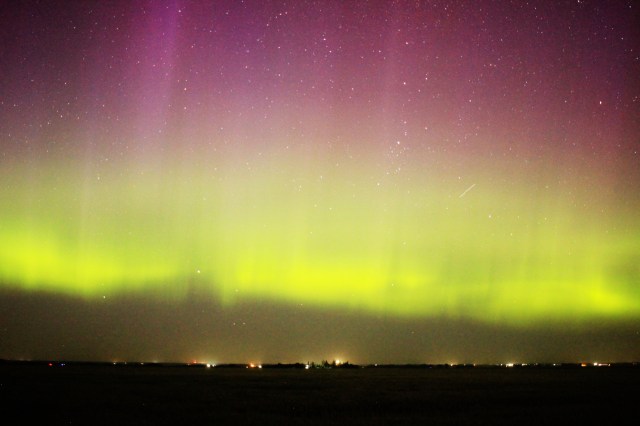


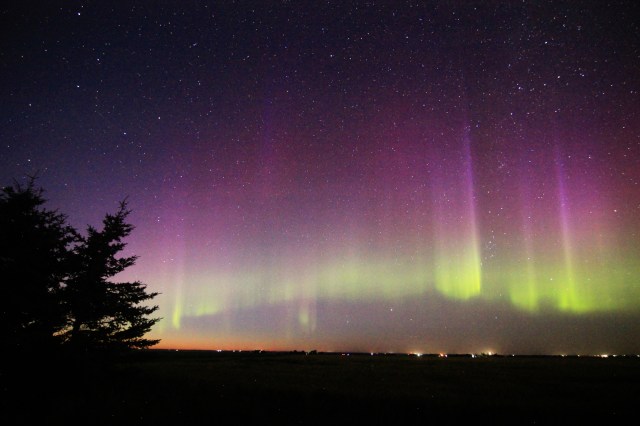











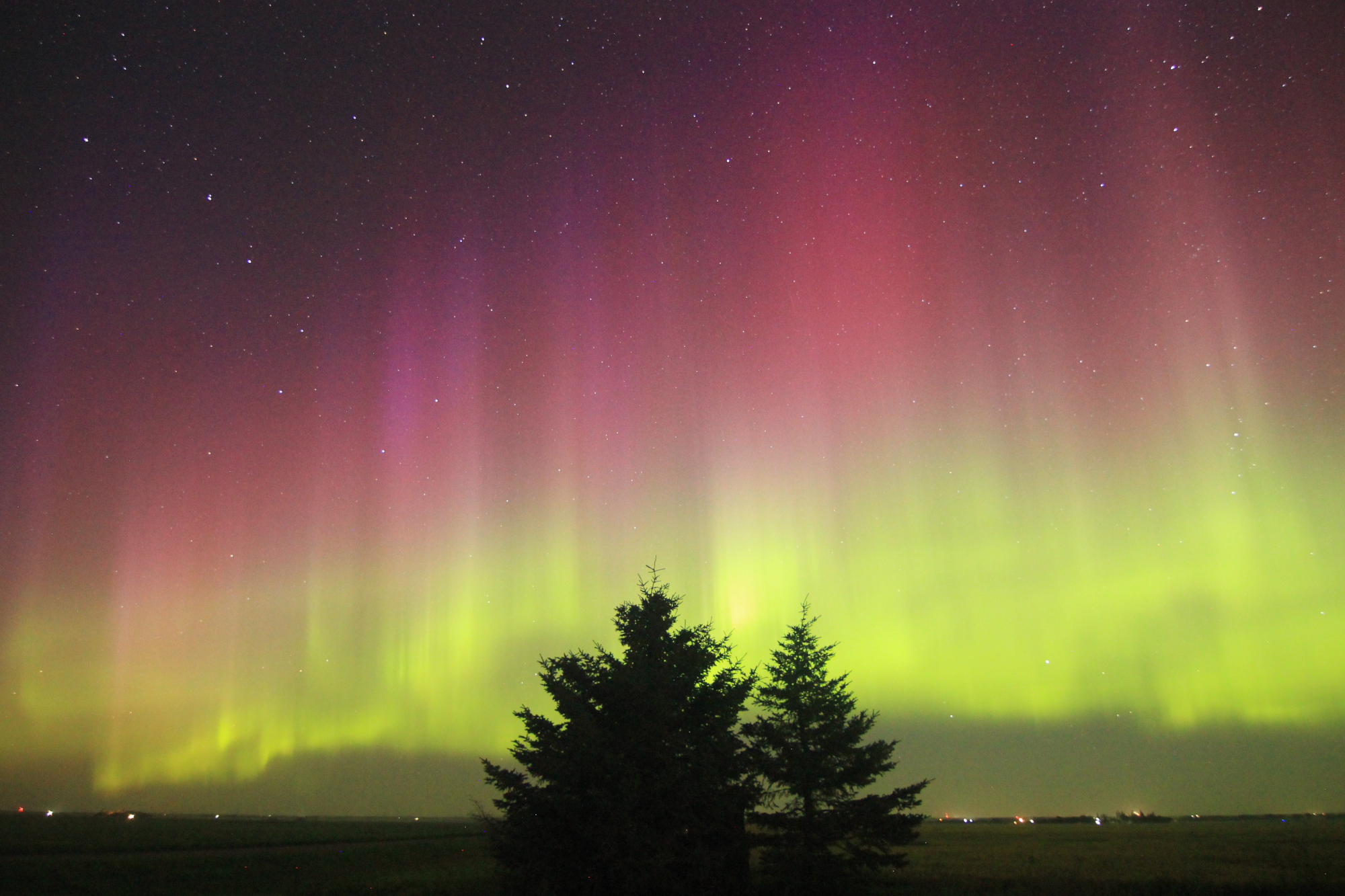
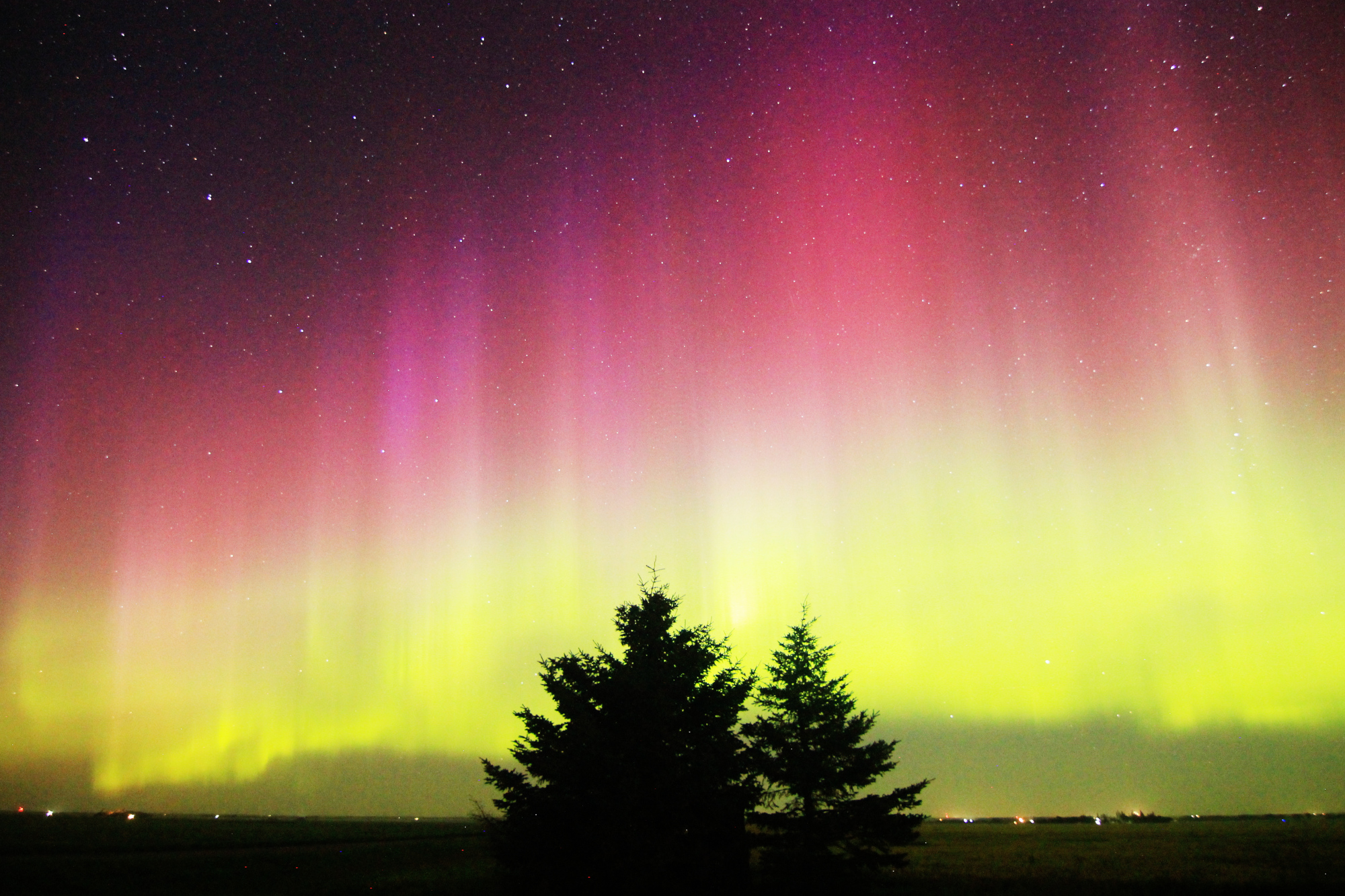

The second night[1]First night is here. of the show was a bit tamer, and tempered by smoke in the air that amplified all the ground lights. Still, it was a good night. I spent a couple hours snapping photos with my friend Kevin.
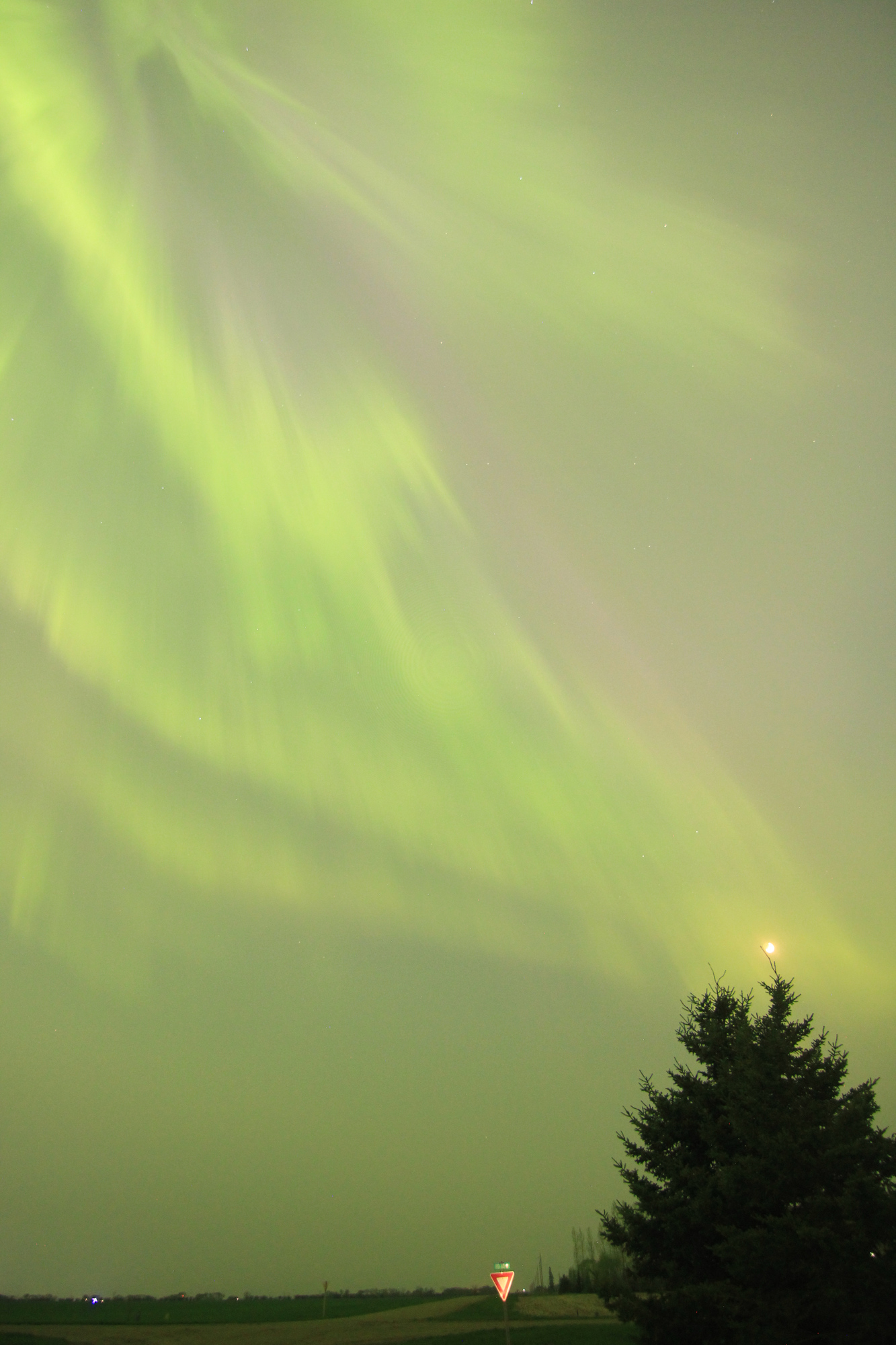

The smoke turned the crescent moon reddish-orange, too.

Timelapse. See if you can tell when the light was strong enough that I could see it reflecting off my hi-vis vest.
I was out from about 10:30pm till about half past midnight. It was another good night.
Footnotes
| ↑1 | First night is here. |
|---|

A few days ago, the sun launched like 5 CMEs our way. This naturally excited all the aurora nerds, myself included[1]I charged all my camera batteries and tried to keep my expectations tempered..
CMEs are the usual cause of auroras, and when you get more than one at a time, the aurora show is usually going to be more intense. So when night fell and the data was[2]were still looking intense[3]The KP index, for example, was between 7 and 9, its maximum; most of the really intense shows I’ve seen were at KP6 or so, I packed my gear and headed west of the city to one of the spot I like to use for aurora photos.
I arrived with daylight still fading and started setting up. There was another car nearby; they, too, were there to watch the show.
Here’s the first shot I got, unedited except for straightening and cropping. Even in the twilight you can see the purple/pinkish lines of aurora.

As it got dark, the lights got brighter. I had two DSLRs running, and I snapped a few photos with my phone, too. Apparently my new phone has a better camera than the old one, or else it’s better at post-processing, because those shots were pretty good if I do say so myself.
I was there from about 10:15pm till just around midnight. My friend Neal came for a visit, and there were about 3 or 4 other cars that showed up on the stretch of road, too.
OK, enough talking; here are the photos. All the DSLR photos were taken at 5 second exposures, apeture f/2.8 or f/1.8 on the 50mm lens[4]ie, as wide open as the lenses would shoot, ISO 1600. The phone photos were taken on night mode, using whatever automatic settings the phone decided would work best.
First up: the DSLRs.
And here are the photos from my phone.





And a couple of time-lapse videos. In each video, 1 second is 1 minute of real time.

I was out from about 10:30pm till midnight, which—judging from some of the other photos I’ve seen—was too early for the real show. Regardless, there was a haze at the horizon and I set up my cameras.
In the video, one second is one minute of real-time. The first minute and a half is from a camera pointed straight north; the remainder is aimed northwest.
In case you slept through my Saturday morning interview with Shannah-Lee Vidal—or you’re not in CBC Manitoba’s broadcast area—here’s how the story went.

Wow, that was a show.
The data looked ridiculous from the outset. There’s one parameter, when you’re consulting the oracle (sorry, the space-weather data), the Bz, that you want to be a negative number. I’ve seen great shows when the Bz was around ‑3 or ‑5. The longer it’s negative, the better.
Yesterday afternoon, every time I checked, the Bz was around ‑15. Crazy.
And the auroral oval looked like this. When it’s yellow, that’s usually a good sign. Red—that much red—is flat-out amazing.

After I watched the new Top Gun talkie, I checked the data in my aurora app while I was still in the parking lot. It looked good[1]The Bz reading was ‑11, where the further into the negative, the better; I usually see a decent show if it’s at ‑4 or so., so I hurried home, grabbed my gear, and went out of town.
Unfortunately it was cloudy to the north. I set up anyway, hoping the clouds would move off, and started snapping photos.
Long story short: the clouds didn’t move off. I gave it about 45 minutes, and then packed up and went home.
Here’s a timelapse of about 20 minutes’ worth of my attempts. Each frame is a 10-second exposure.
And here’s a handful of my favourites from the photos I got. (I think I caught a meteor in the first one, on the far left.)
Footnotes
| ↑1 | The Bz reading was ‑11, where the further into the negative, the better; I usually see a decent show if it’s at ‑4 or so. |
|---|

The aurora data looked good and the sky was clear, so I packed up my camera—grabbing, at the last minute, my 50mm lens, thinking I’d maybe get some shots of Orion with it—and headed out to find a dark spot.
10 minutes northwest of town, I stopped on the side of a gravel road and got set up. There was a faint haze to the north which, to the camera, was green (my eye saw it as grey). The data showed that there should be a bit more activity in about a half hour, so I started snapping photos. Initially I was taking photos at 10 second exposures. As the night wore on I dropped that to 5 seconds, then 2.5 and finally 2. (I took a few frames at 1 second with my f/1.8 lens, but they were a little darker than I like.)
Here’s the results.
It was even visible in town, if you knew what you were looking at. This photo was taken on my street, just before I went back in the house.


Added: I took a few photos for a panorama to show how wide the show was. This stretches from the west to the east; the road visible on the far left and the far right is, in fact, the same road.